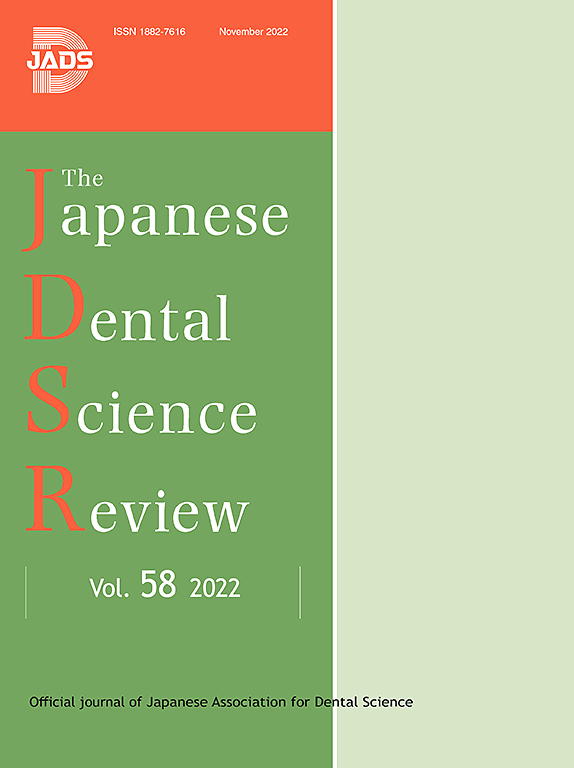Antiseptics as effective virucidal agents against SARS-CoV-2: Systematic review and Bayesian network meta-analysis
IF 6.6
2区 医学
Q1 DENTISTRY, ORAL SURGERY & MEDICINE
引用次数: 0
Abstract
This study represents the first Bayesian network meta-analysis (NMA), which aimed to determine the virucidal efficacy of oral and nasal antiseptics against SARS-CoV-2 in saliva. Eligible studies evaluated the antiseptics’ effect on viral load in SARS-CoV-2-infected subjects. The search was performed in September 2024 through PubMed, World Health Organisation, Embase, Scopus, bioRxiv, and medRxiv. The methodological quality was evaluated using the Cochrane RoB-2 checklist. Twenty-six articles and 16 antiseptics were assessed. Bayesian NMA was possible for seven antiseptics, ranked by probability of best option for viral load reduction (SUCRA values): PVP-I (0.85); CPC and CHX (0.72); H2O2 (0.70); CHX (0.64); CPC (0.50); H2O2 and CHX (0.38); and HClO (0.34). Virucidal efficacy at baseline was significant for (viral load reduction): PVP-I (42 %), H2O2 (34 %), and CHX (31 %). Compared to the control group, PVP-I remained significant (34 %), whereas H2O2 and CHX approached significance (26 % and 22 %, respectively). In conclusion, a single application of PVP-I, H2O2 or CHX are the best options for reducing the SARS-CoV-2 viral load in saliva, which can be particularly relevant in high-risk settings. However, methodologically well-designed studies using more appropriate quantification techniques are needed to clarify better the clinical efficacy of antiseptics against SARS-CoV-2 and other respiratory viruses.
防腐剂作为有效的抗病毒药物对抗SARS-CoV-2:系统评价和贝叶斯网络meta分析
本研究是首个贝叶斯网络meta分析(NMA),旨在确定口服和鼻用杀菌剂对唾液中SARS-CoV-2的抗病毒效果。符合条件的研究评估了防腐剂对sars - cov -2感染受试者病毒载量的影响。检索于2024年9月通过PubMed、世界卫生组织、Embase、Scopus、bioRxiv和medRxiv进行。采用Cochrane rob2检查表评估方法学质量。评估了26篇文章和16种防腐剂。根据降低病毒载量的最佳选择概率(SUCRA值)对7种防腐剂进行贝叶斯NMA排序:PVP-I (0.85);CPC和CHX (0.72);过氧化氢(0.70);CHX (0.64);中国共产党(0.50);H2O2和CHX (0.38);和HClO(0.34)。基线时的病毒杀灭效果显著(病毒载量降低):PVP-I(42 %),H2O2(34 %)和CHX(31 %)。与对照组相比,PVP-I仍然显著(34% %),而H2O2和CHX接近显著(分别为26% %和22% %)。综上所述,单次使用PVP-I、H2O2或CHX是降低唾液中SARS-CoV-2病毒载量的最佳选择,这在高风险环境中尤为重要。然而,为了更好地阐明防腐剂对SARS-CoV-2和其他呼吸道病毒的临床疗效,需要在方法学上设计良好的研究,使用更合适的定量技术。
本文章由计算机程序翻译,如有差异,请以英文原文为准。
求助全文
约1分钟内获得全文
求助全文
来源期刊

Japanese Dental Science Review
DENTISTRY, ORAL SURGERY & MEDICINE-
CiteScore
9.90
自引率
1.50%
发文量
31
审稿时长
32 days
期刊介绍:
The Japanese Dental Science Review is published by the Japanese Association for Dental Science aiming to introduce the modern aspects of the dental basic and clinical sciences in Japan, and to share and discuss the update information with foreign researchers and dentists for further development of dentistry. In principle, papers are written and submitted on the invitation of one of the Editors, although the Editors would be glad to receive suggestions. Proposals for review articles should be sent by the authors to one of the Editors by e-mail. All submitted papers are subject to the peer- refereeing process.
 求助内容:
求助内容: 应助结果提醒方式:
应助结果提醒方式:


